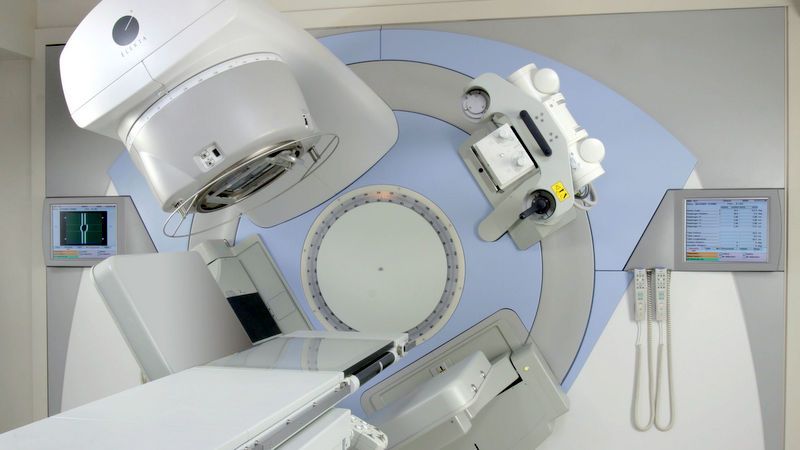Kauterion in Greek means marked with iron . For many centuries, heated metal has been used in medicine to burn tissues as a control for bleeding and to destroy microorganisms. Initially, the metal was heated by fire and later started using electricity. With an electrocautery invented by Claude Paquelin in 1875, metal wire was heated and used to burn fabrics. In the beginning, the principle was simple: the wire was heated to red and attached to the fabrics. Superficial coagulation was performed in this way, but the remaining grade III burns treated for a long time and gave poor cosmetic results. As the years progressed, so did the electrocautery. In the 1970s, Robert Shaw introduced a new principle – variable – constant current when cutting the edges of the skin. The scalpel was used to burn small, blood vessels. The tip of the scalpel then heated to 110 C to 280 C.
Radiosurgery is a procedure in which part of a tissue is removed or destroyed using electricity. Currently, electrocautery and diathermy devices are used in surgery, but radiosurgical devices work a little differently. 1978 Maness proved that the optimal wavelength used for cutting human tissue is 3.8 MHz and this frequency was introduced in the first generation of Ellman generators.
Radiosurgery is a unique non-contact method used to cut and coagulate soft tissues using a radio frequency (3.8-4.0 MHz).
The cutting effect is obtained due to the heat released due to the resistance of the fabrics to the passing high frequency waves. This energy is concentrated on the end of the “surgical” electrode and triggers the discharge of intercellular molecular energy, which heats the tissues and practically evaporates the cells. In this way, there is no direct contact of the electrode with the cells and the electrode itself does not heat up. In addition, using radiosurgery, there is no painful muscle contractions or stimulation of nerve endings as waves pass through the patient’s body (Faraday effect).
Unlike other surgical methods, using a radiosurgical electrode, the incision is made without the use of pressure and therefore no mechanical damage to the cells occurs, resulting in no necrosis of the surrounding tissues.
Radiosurgery differs from cauterization in that during cauterization, tissue damage can be equated to III? burns.
Tissue damage degree (mm) for various surgical instruments.
|
Operation and time |
Zone of coagulation necrosis |
Parabiosis zone |
Zone of damaged epithelium |
| Radio wave | |||
| 1 para | 0.13 | 0.09 | 0.04 |
| 3 para | 0.18 | 0.08 | 0.24 |
| Ultrasound | |||
| 1 para | 1.09 | 0.65 | 1.13 |
| 3 para | 0.99 | 0.53 | 1.02 |
| Laser | |||
| 1 para | 1.40 | 0.67 | 1.20 |
| 3 para | 1.46 | 0.38 | 1.14 |
Waves at a frequency of 3.8 – 4.0 MHz thermally destroy the minimum number of cells at the edge of the 0.04 mm section, destroy all infectious agents, but the heat does not spread to the surrounding tissue. Radiosurgery ensures the sterility of the wound, boils the lymphatic pathways, prevents the spread of cancer, the formation of scars. Fast, smooth healing results in an excellent cosmetic effect and restoration of organ function. This method can be used to cut, burn, burn areas of tissue and single points. It is the most technically advanced method of sustainable treatment in all areas of surgery, endoscopy / Radiowave Technology www.ellman.com.
Uses in gynecology: cervical, vaginal, vulvar biopsy, removal of warts, polyps, cervical conization, treatment of cervical wounds, small plastic surgeries in the area of the external genitalia – exit.
enefits: tissue conservation, quality healing. The device is electronically controlled, convenient, easily replaceable surgical nozzles for various purposes. The biopsy material sent for microscopic examination is undamaged by heat, resulting in a lower chance of diagnostic errors. The effectiveness of radiosurgery is equivalent to the effectiveness of laser surgery, except that there are no different effects on tissues of different composition and color.







